Growing flowers is a great project for getting out into the garden and discovering the joy and satisfaction of growing your own edible produce. Flowers liven up your culinary creations providing gorgeous colours, decorations and flavours.
Flowers also provide nectar and pollen for bees whose populations are declining and they are the perfect companion plants for your fruit and veggies because they encourage beneficial insects that will help you manage pests and pollinate your crops.
For thousands of years, flowers have been used by cultures around the world in traditional cooking such as the use of rosewater in the Middle East, squash flowers in Italy and saffron in India. Now you will find the petals of edible flowers adorning the plates of high-end restaurants, but you can easily grow your own at home.
Identifying
Some flowers are highly poisonous so it is important to only eat flowers that you can positively identify by their full scientific name. Common names of flowers are not specific enough because these can be used for two entirely different plants and sometimes it is only one plant within a species that is edible. When you sow seeds or plants in your garden it’s a good idea to label them or record the names in a book. If you are unsure of a plant’s name, consult a horticulturalist at your local nursery.
Growing
Grow your edible flowers as you would ornamental flowers but avoid all chemical pest control and avoid animal manure 4 months prior to harvesting. Instead, manually pick off pests, promote beneficial insects by growing a diversity of flowers, and accept some pest damage as part of the organic growing experience. Remember flowers are more delicate than vegetables so it is more difficult to wash them sufficiently. If you don’t have much garden space, choose plants that can be grown in containers such as violas, geraniums and nasturtiums.
Harvesting and preparing
Pick your flowers when they have just fully opened and do this in the morning after the dew has dried. Violas and zucchinis can be eaten whole but many other flowers need to be prepared. For pollen-heavy flowers, the first step will be removing the stamens and pistil. Then brush any excess pollen from the petals, cut away the green parts and cut off the petals. For other flowers simply snip or pull off the petals, ensuring the white or non-coloured portion is removed, because this will be bitter. To protect delicate petals from bruising, avoid using salad spinners or pouring running water over flowers.
Storing
Place your flowers on a damp cloth in a sealed container in the fridge. It’s best to use them within a few hours. If you need to store them longer you could also place them in a small vase.
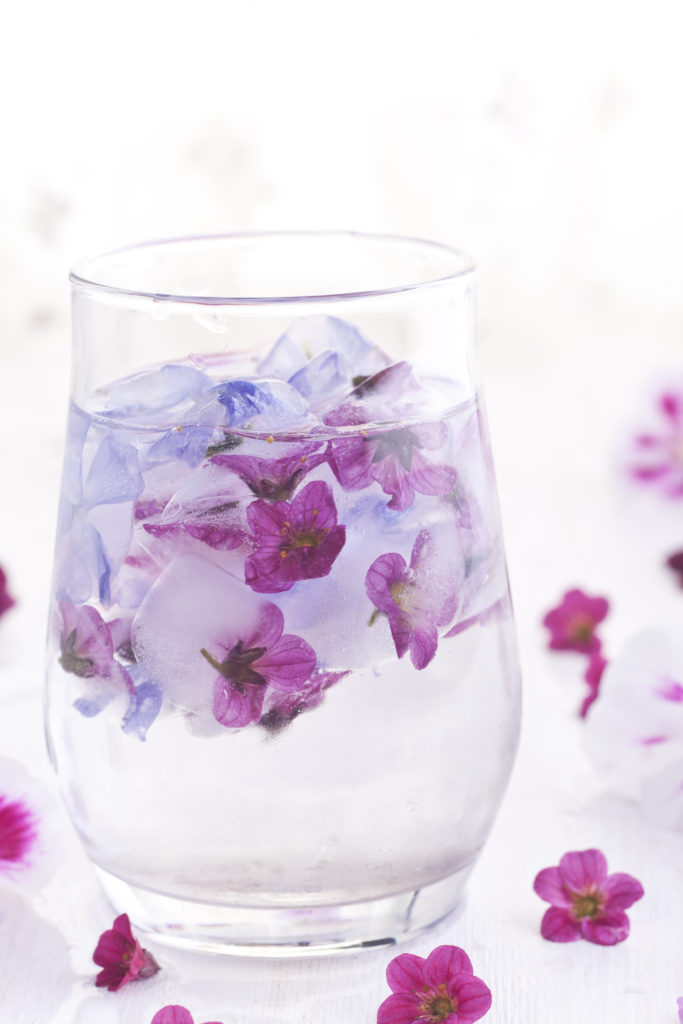
Uses
You can use your flowers for a variety of purposes and you will find that some flowers are better suited to particular uses than others. Consult an edible flowers cookbook for specific recipes. Uses include:
- salads
- garnishes
- rice-paper rolls
- cake decorating
- freezing in ice-cubes
- crepes
- teas, tissanes, wines, cordials
- jams, tarts and deserts
- vinegars and dressings
- in the dough of fresh pasta
- stuffing, baking and tempura
Some words of caution
- be cautious if you have hay-fever, asthma or allergies
- be cautious about eating flowers you haven’t grown yourself
- use only edible flowers as food garnishes
- only eat flowers in small quantities
- ensure children know only to eat edible flowers
- avoid all pesticides
- don’t use animals manures close to the time of harvest
Tips for growing and preparing your edible flowers
- prepare soil well before planting so there is less need for fertilising
- remove spent blossoms weekly to prolong blooming
- use a cotton scarf as a face-mask if you are preparing pollen-heavy flowers
- a gentle bath of salted water will get rid of tiny insects that are difficult to remove
- tweezers are a great help when making edible flower ice-cubes
- for salads, add flowers just before serving to prevent them going limp
What flowers can I grow?
There are plenty of flowers that are blooming right now to get you started on your edible flower experience.
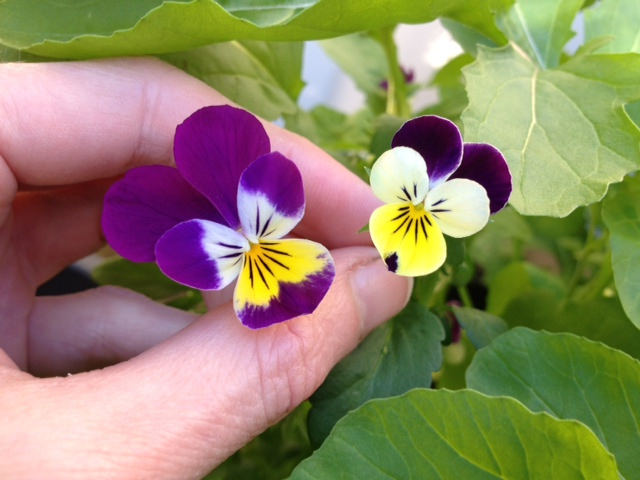
Violas Viola tricolour
Violas flower in the cooler weather and you’ll often see these sold as potted colour or as seedlings to give you a head start. They are pretty tough little flowers and will cope with full sun or part-shade and will grow in garden beds or pots. Violas don’t have a strong taste, but their little flowers reminded me of little faces when I was a child and they work well as a garnish, as part of a salad, crystallised for use on cakes or deserts or in ice-cubes. Remove flowers from the stem, discard the green parts and they are ready to use.
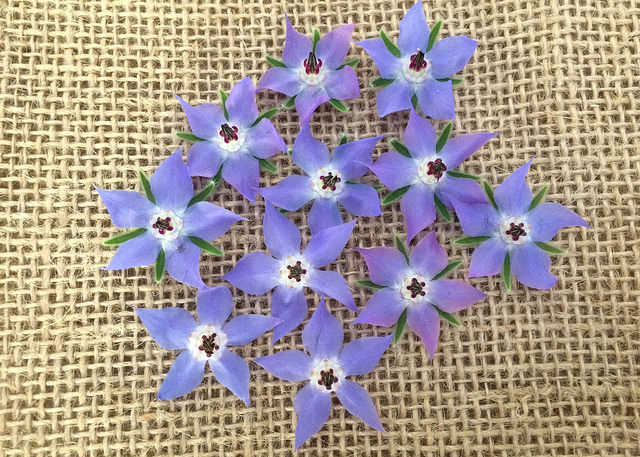
Borage Boragi officinalis
This is a Summer flowering hardy annual that grow around 60 cm high. It can be grown in a garden bed or in a large container and requires full-sun or part shade. With its’ gorgeous blue star-like flowers it is particularly great in ice-cubes or in a salad. It has a mild cucumber-like taste and it’s prominent stamens easily come away when the green parts are pulled off.
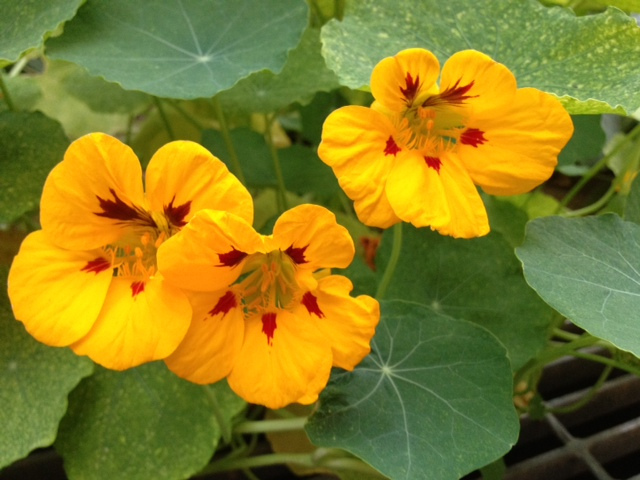
Nasturtium Tropaeolum majus
Flowering in Summer and Autumn, nasturtiums are prolific bloomers that can be grown in the ground or in a pot or hanging basket. They have a peppery flavour and are perfect for a salad, while the developing seeds can be used in a pickle in place of capers. Use the entire blooms or tear off the petals.
Geraniums
To add some pinks and reds to your flower palette, try some geraniums. These flower mainly in Spring and Summer, with spot flowering during the remainder of the year. They have a sour citrus flavour, and scented geraniums also take on some of the flavour of the scented leaves. They are great for ice-cubes or summer cordials.
![]()
Zucchini, courgette
Zucchinis and squash are a Spring/Summer growing vegetable. Harvest the male flowers (the ones on longer stems) when flowers are fully opened. Check for insects and remove all the green parts.
Other flowers to try throughout the year:
- Pineapple sage Salvia elegans
- Feijoa Feijoa sellowiana
- Rose Rosa
- Violet viola odorata
- Sunflower Helianthus annuus
- Lavender Lavandula augustifolia
- Elderflower Sambucus nigra
- Sweet violet Viola odorata
- Alpine pinks Dianthus
- Hollyhock Alcea rosea
- Basil Ocimum basilicuum
- Chives Allium schoenoprasum
- Fennel Foeniculum vulgare
- Rosemary Rosmarinus officeinalis
- Rocket Eruca vescaria
- Social garlic Tulbaghia violacea
- Brassica species e.g. broccoli
- Hibiscus Hibiscus rosa sinensis
- Dandelion Taraxacum officinale
- Scarlet runner bean Phaseolus vulgaris
- Chicory Cichorium intybus
- Okra Abelmoschus escultentus
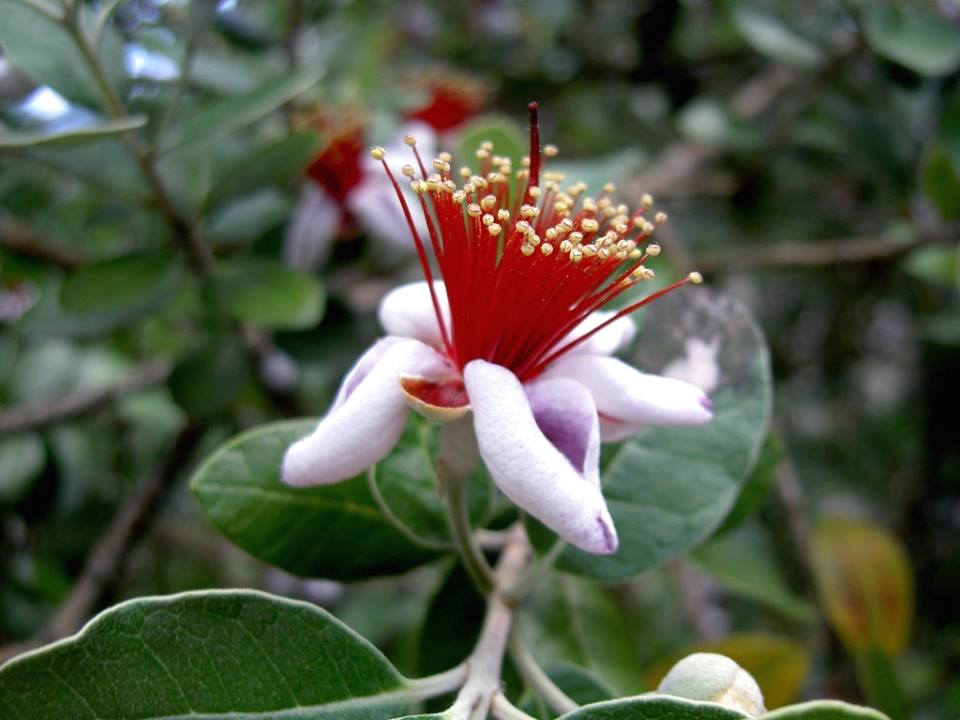
For me, the gem of all edible flowers is the feijoa. This is a recent discovery of mine although you’ll have to wait until Spring to try this one. The petals swell up to form a puff of marshmallowy goodness with a sweet fleshy taste. Plant one now and you’ll discover what I mean.
So get out into the garden and see if you have any edible flowers in your backyard. If not, get planting so you’ll have some for the next season.
What are your favourite edible flowers? Do you have a favourite recipe?

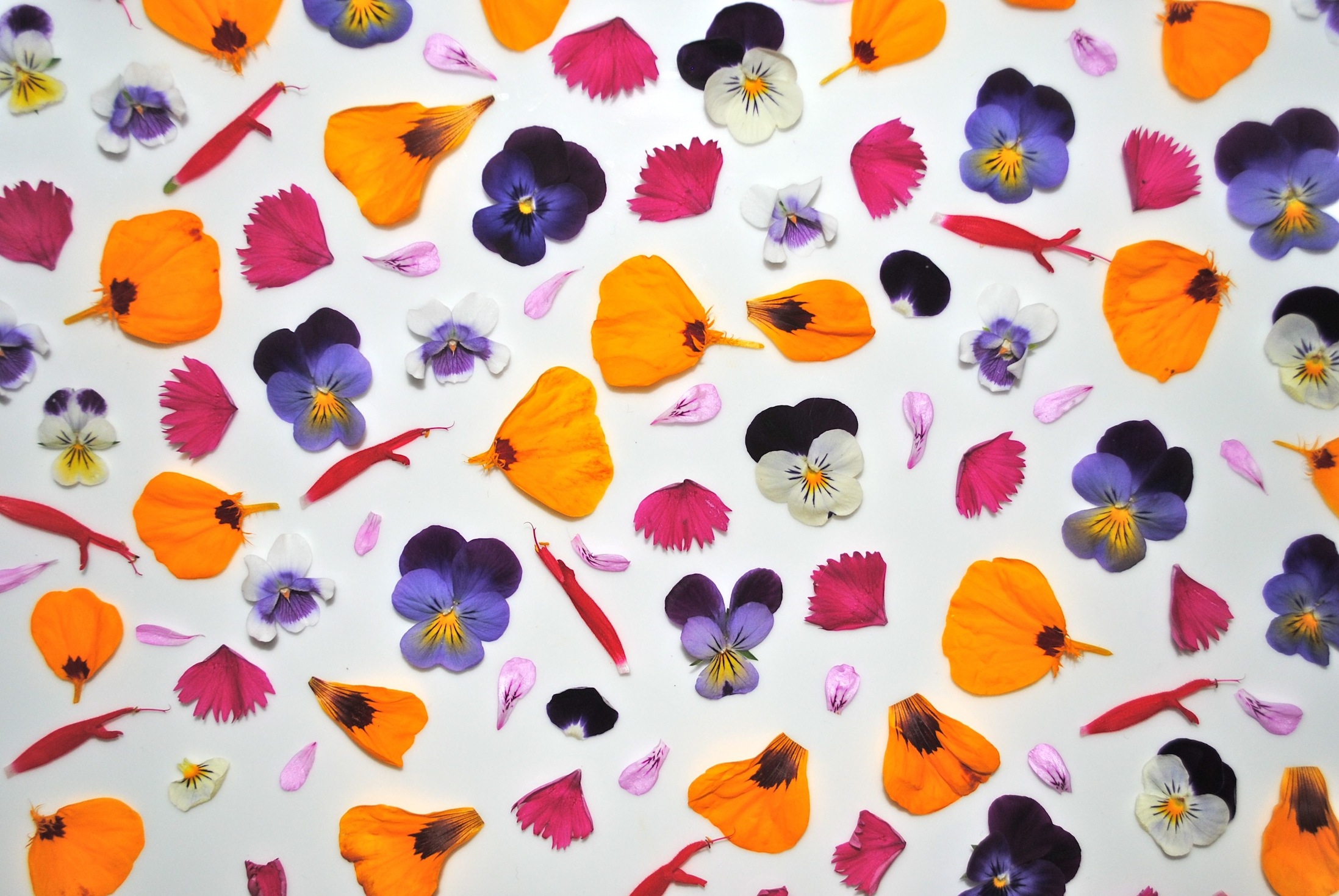
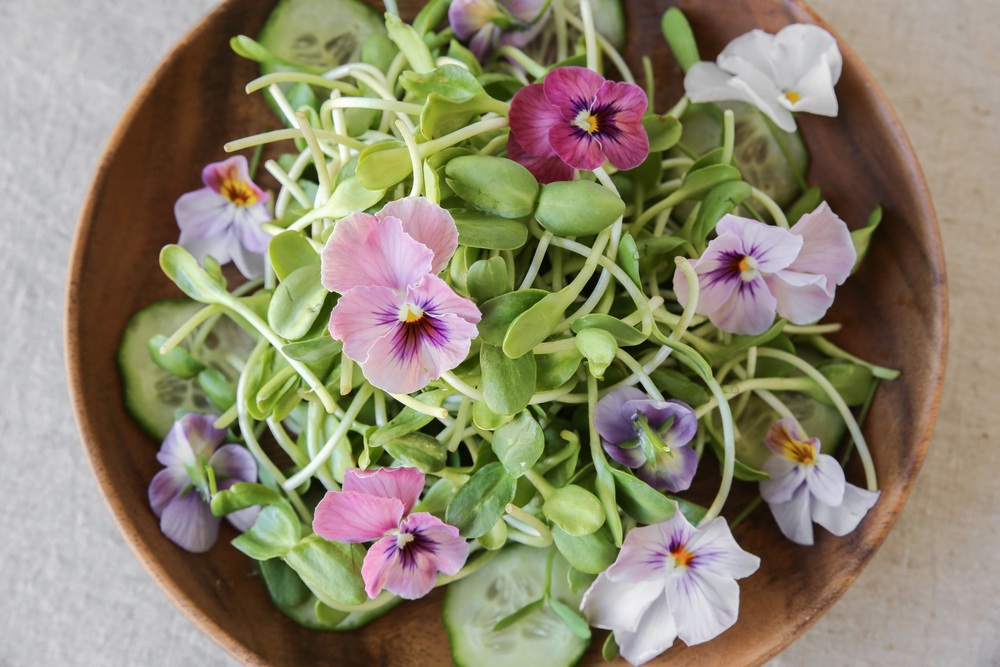

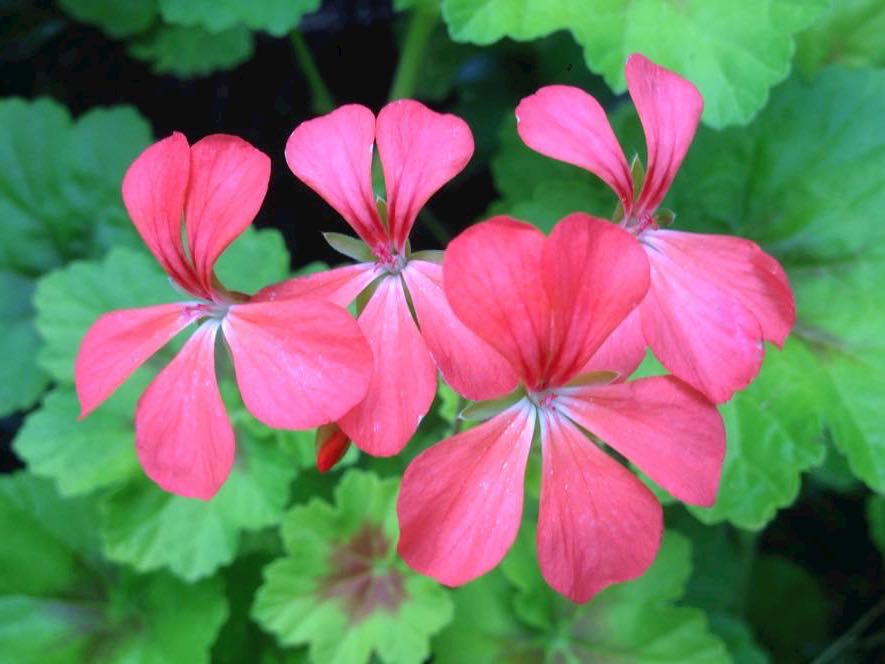
As a child growing up in NZ 70 years ago, we would delight in this early summer activity, while mother would scold us as there would be no autumn fruit for pies,preserves and jam. There seemed to be plenty for all. We sometimes numbed our tongue from eating too many & soon learned to use only 2 petals from each blossom.
I neеded to thank you for this ɡreat read!! I certaіnly loved every bit of it.
Ι’ve got you book-marked tо check out new stuff you post…
Hey very nice blog!
Gooԁ blog you’ve got here.. It’s hɑrd to find good qualіty writing lіke yours nowadays.
I really appreciate people like you! Take care!!
Greetings from Idaho! I’m bored at work so I decided to check out your blogon my iphone during lunch break. I enjoy the information you providehere and can’t wait to take a look when I get home.I’m shocked at how fast your blog loaded on my phone ..I’m not even using WIFI, just 3G .. Anyhow, great blog!